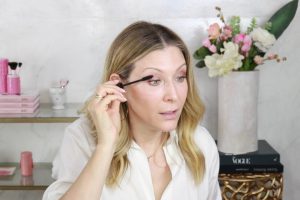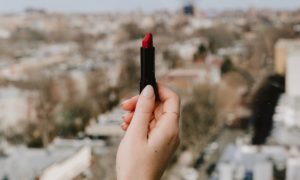Ever been on the receiving end of that unsolicited observation: “You look tired”? (Thanks, we think?) Blame it on your peepers. Your eyes are usually the first area to give away a lack of sleep, whether you were up late reading a good book or wanted to squeeze in a run before starting your day.
That’s because your eyes are one of the first areas of the face to show signs of wear. And it’s not just sleep — even if you are getting the recommended hours of quality shut-eye, for instance, the eyes are also prone to fine lines and dryness. That’s why an eye cream or serum should be a part of a good skincare routine.
“Eye creams are preventative and corrective formulations designed specifically for the delicate eye tissue,” says NakedPoppy skin specialist Tara Parenti. Think of them sort of like sleep in a jar — or giving their best impression of it, anyway.
Here, why an eye cream is worth your time, what it offers, and how exactly to use it.
Why the Eyes Need Extra TLC
The eyes have some of the thinnest skin on the body, making them more vulnerable to all sorts of damage — they’re just a little delicate! (The good news? Extra care goes a long way.) “The skin around the eyes can be more susceptible to dryness, resulting in showing fine lines and wrinkles, tiredness, and skin concerns more easily and quickly,” says NakedPoppy research scientist Marisa Plescia.
Over time, repeated facial expressions, such as smiling and squinting, can form permanent lines and wrinkles in skin — it’s just part of the aging process we all go through. (Exhibit A: crow’s feet.) And that already thin skin gets even thinner with age, too, which “can cause dark circles and even puffiness, as the dark blood vessels beneath your skin become more visible,” says Plescia.
This is where eye cream comes in. “Formulations will have percentages and ingredient ratios that are safe and effective at treating lines and wrinkles, dryness and dehydration, pigmentation — and can even have sun protection,” says Parenti. They work to offset these effects, giving you the brighter, smoother look of a good night’s sleep.
This inevitably leads to another question: Why can’t you just use your usual face moisturizer on your eye area? While that’s always an option, particularly if you’re interested in just keeping the area moisturized and the skin barrier healthy, says Plescia, “eye creams are usually formulated with specific ingredients to address the main concerns around the eyes, including dark circles and puffiness. The additional ingredients are usually not added to a non-specified face cream or oil.”
What’s in an Eye Cream
So, about these special ingredients designed to target the eye area — what are they, exactly? Here’s a rundown of what you might find.
Caffeine
Late night? In the same way that caffeine in your coffee gives you a jolt of energy, it can similarly wake up your eyes. “Caffeine is a natural, but mild vasoconstrictor, meaning it narrows blood vessels,” says Plescia. “This can help reduce the appearance of dark circles or puffy eyes as there is less dark blood in the vessels, leading to less visible hyperpigmentation.”
That said, caffeine can be hard to find in a clean eye cream formula. We noticed that gap, which is why we made it one of the hero ingredients in the NakedPoppy Awaken Eye Cream, where it works alongside glucosyl hesperidin — a citrus-derived bioflavonoid — to enhance microcirculation and thus minimize puffiness and dark circles in one fell swoop. Once you dab it on, get instant, seamless coverage with Kosas Revealer Super Creamy + Brightening Concealer and Daytime Eye Cream, which blends in seamlessly.
Antioxidants
While some dark circles are caused by visible blood vessels, they can also be the work of sun damage — which can create hyperpigmentation around the eyes, as it does the rest of the face. (It tends to be more brown in color, versus purple or blue-ish for vascular-related circles [1].)
For addressing that, antioxidants are key. “Antioxidants can help brighten the skin around the eyes,” says Plescia. One such antioxidant, vitamin C, can also increase collagen production, which can thicken the skin and in doing so, reduce the visibility of blood vessels. Not surprisingly, tetrahexyldecyl ascorbate — a highly stable form of vitamin C — can be found in the NakedPoppy Awaken Eye Cream, too, where the versatile ingredient works in a number of ways to brighten and tighten skin.
Peptides
If you want to reduce the look of crow’s feet, look no further. “Peptides are short chains of amino acids that act as building blocks of proteins, such as the all-important skin proteins of collagen, elastin, and keratin,” says Plescia. (Collagen and elastin, for the uninitiated, serve as the scaffolding within skin and keep it firm and smooth.)
“When applied topically to the skin, peptides act as chemical messengers and can trigger the skin cells to build collagen and elastin,” she explains. “This helps with fine lines and wrinkles.” They’re plentiful in quinoa seed extract, one of the active ingredients in, you guessed it, the NakedPoppy Awaken Eye Cream — proving this eye cream does it all. With the goal of comprehensive care of the skin around the eyes, the formula harnesses many of these key ingredients for results you can actually, well, see.
Niacinamide
Niacinamide, or vitamin B3, is a winner for a lot of reasons. “Niacinamide can help fade dark spots, but can also help to improve skin barrier function,” says Plescia. It also has powerful anti-inflammatory properties.
What that means for your eyes: It can improve any pigmentation that exaggerates the appearance of dark, keep the skin properly moisturized, and calm inflammation and redness caused by allergies [2].
How to Apply Eye Cream
You can use eye cream both morning and night to get round-the-clock benefits; for daytime, lightweight formulas are best, since there’s a much lower risk of pilling beneath makeup. That said, “some formulations will have ingredients that are safest to use just at night, such as a retinol,” says Parenti. So, be sure to read the application instructions to confirm what time of day to use it. Apply it after your serum, but before your moisturizer.
First tip? Keep the pressure light. “I like to apply my eye cream with my ring finger because it gives the most control in your pressure,” says Parenti. “Keep your application to the orbital eye area; since this is the thinnest tissue, the product can travel quite quickly and into the eye, causing irritation.”
Last but not least, consider storing your eye cream in the fridge. “For certain formulations, chilling them in the refrigerator can enhance their cooling effects,” says Parenti. (Gels and creams, including NakedPoppy Awaken Eye Cream are best for this.) In addition to reducing puffiness, the cooling effect also elevates the experience and helps make the most of the skincare routine as self-care. And with brighter, refreshed eyes in your future, you might even look forward to it.
Have a question about how to create your personal skincare routine? Leave it in the comments and our skin specialist Tara will answer it for you.
Want perfect-for-you clean beauty picks? Take the 3-min NakedPoppy assessment.
Shop the story:
- NakedPoppy Awaken Eye Cream ✨
- Kosas Revealer Super Creamy + Brightening Concealer and Daytime Eye Cream 💕
- Maya Chia The Straight A Serum 🌙
References
[1] It tends to be more brown in color, versus purple or blue-ish for vascular-related circles: https://www.ncbi.nlm.nih.gov/pmc/articles/PMC4756872/#__sec2title
[2] can improve any pigmentation that exaggerates the appearance of dark, keep the skin properly moisturized, and calm inflammation and redness caused by allergies: https://www.ncbi.nlm.nih.gov/pmc/articles/PMC4587894/#__sec3title






Comments